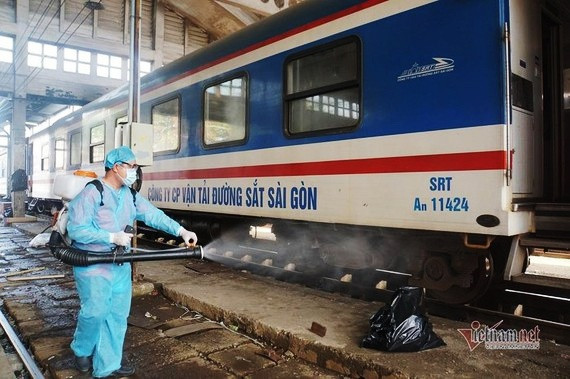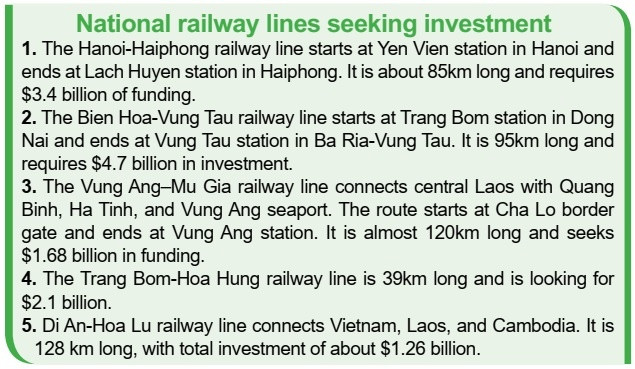East Japan Railway Company (JR East), Japan’s largest rail operator, has expressed interest to the Ministry of Transport (MoT) about upgrading and renovating the Hanoi-Haiphong railway line, as well as building the route to Haiphong Port.
“With the support of Japan’s Ministry of Economy, Trade, and Industry, we hope that the MoT will allow us to conduct a feasibility study for this project,” said a representative from JR East.
 |
| National railway investment requiring foreign push, photo source: Vietnamnet |
Since the railway network master plan for the decade was approved in 2021, Japanese investors have been paying attention.
Under the plan, the Hanoi-Haiphong route will be upgraded. The long railway to Haiphong port connecting with Lach Huyen port and Dinh Vu port, worth about $1.5 billion, has also been included in the list of projects seeking foreign investment.
In June 2022, a JR East delegation took part in the first working session with the MoT and Vietnam Railway Corporation, and made a field trip to the Hanoi-Haiphong railway.
“We have conducted surveys to explore the transportation demand from Haiphong to Hanoi and the surrounding areas. We recognise the importance and potential of upgrading and renovating the line and connecting it to the seaport,” the representative said.
The Hanoi-Haiphong railway will be 102km long and will be developed as a double-track railway. The Haiphong side connects the railway to Dinh Vu, Nam Do Son, and Lach Huyen ports. The Lao Cai side links the railway with Chinese railways to exploit intermodal and transit transport.
The upgrade for the existing railway will be conducted after 2025. The single-track railway gauge of 1,000mm remains unchanged with both passenger and freight trains. Meanwhile, the new 1,435mm railway line will specialise in freight trains only.
In addition, the MoT is also evaluating the feasibility of restoring Thap Cham-Dalat railway under the public-private partnership (PPP) model by Bach Dang Hotel Complex Trading-Service. The railway passes through Phan Rang-Thap Cham city of the south-central province of Ninh Thuan and the Central Highlands city of Dalat, with a length of 83.5km and passing 16 stations.
“The project will cost $1 billion, and we have also received funding commitments from a number of domestic and foreign commercial banks,” said Than Ha Nhat Thong, general director of Bach Dang Hotel Complex.
However, it will not be easy to lure private and international investment in transport. After nearly a decade of development with private engagement in railway infrastructure, only Yen Vien station, developed under a railway infrastructure lease, has been truly successful. Other projects have been suspended despite reported investor interest.
JR East is not the first foreign investor interested in railway infrastructure. In 2018, South Korea’s Lotte E&C sought approval to invest in upgrading Yen Vien-Lao Cai railway, and building a railway connecting Lao Cai and Ha Khau through PPP. Lotte E&C proposed the development of the project under a build-lease-transfer contract, across two components. However, the project has seen no signs of development despite support from the MoT.
According to Duong Hong Anh, deputy director of the Vietnam Railway Administration, the biggest barrier to rail funding is that projects require huge capital but generate low profits. This, coupled with a lack of guidance on incentives, makes it hard to lure investors.
To implement the railway network master plan for 2021-2030, the MoT has proposed increasing public investment capital in the medium term. Priority is to be given to investment in several large railroad projects to reduce logistics costs in the next few years. The MoT is also currently completing a pre-feasibility study for building a North-South high-speed railway.

Source: VIR